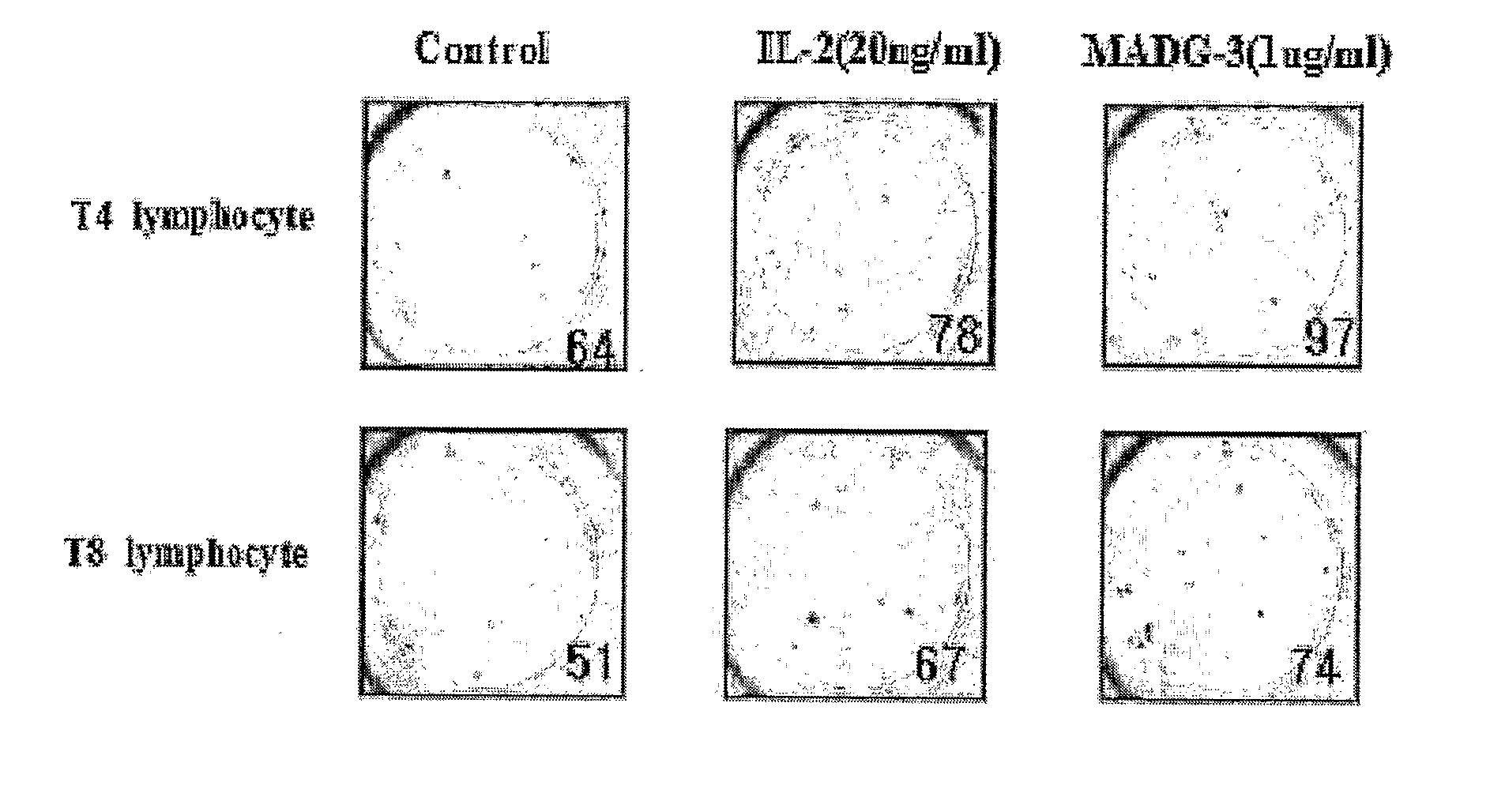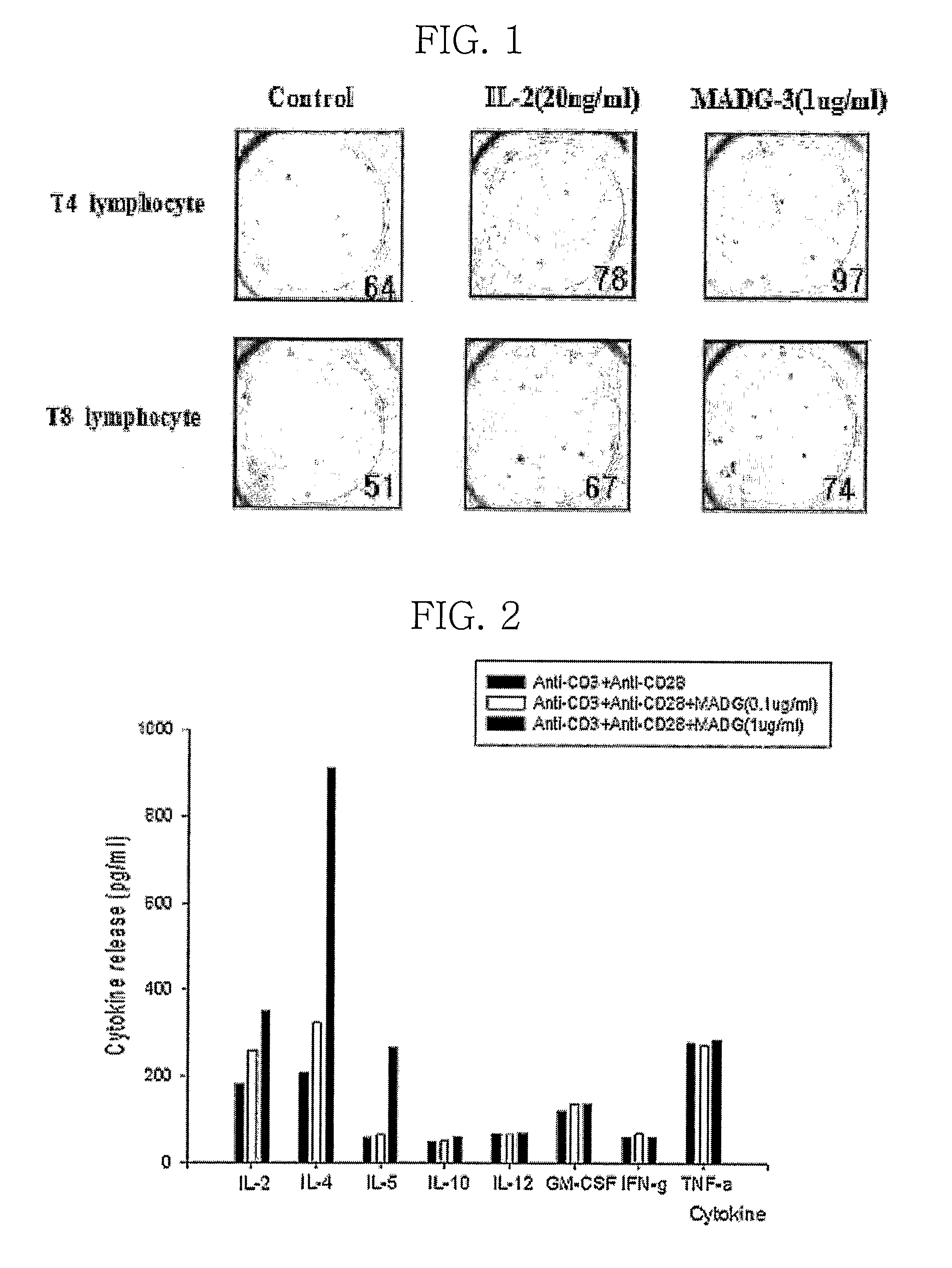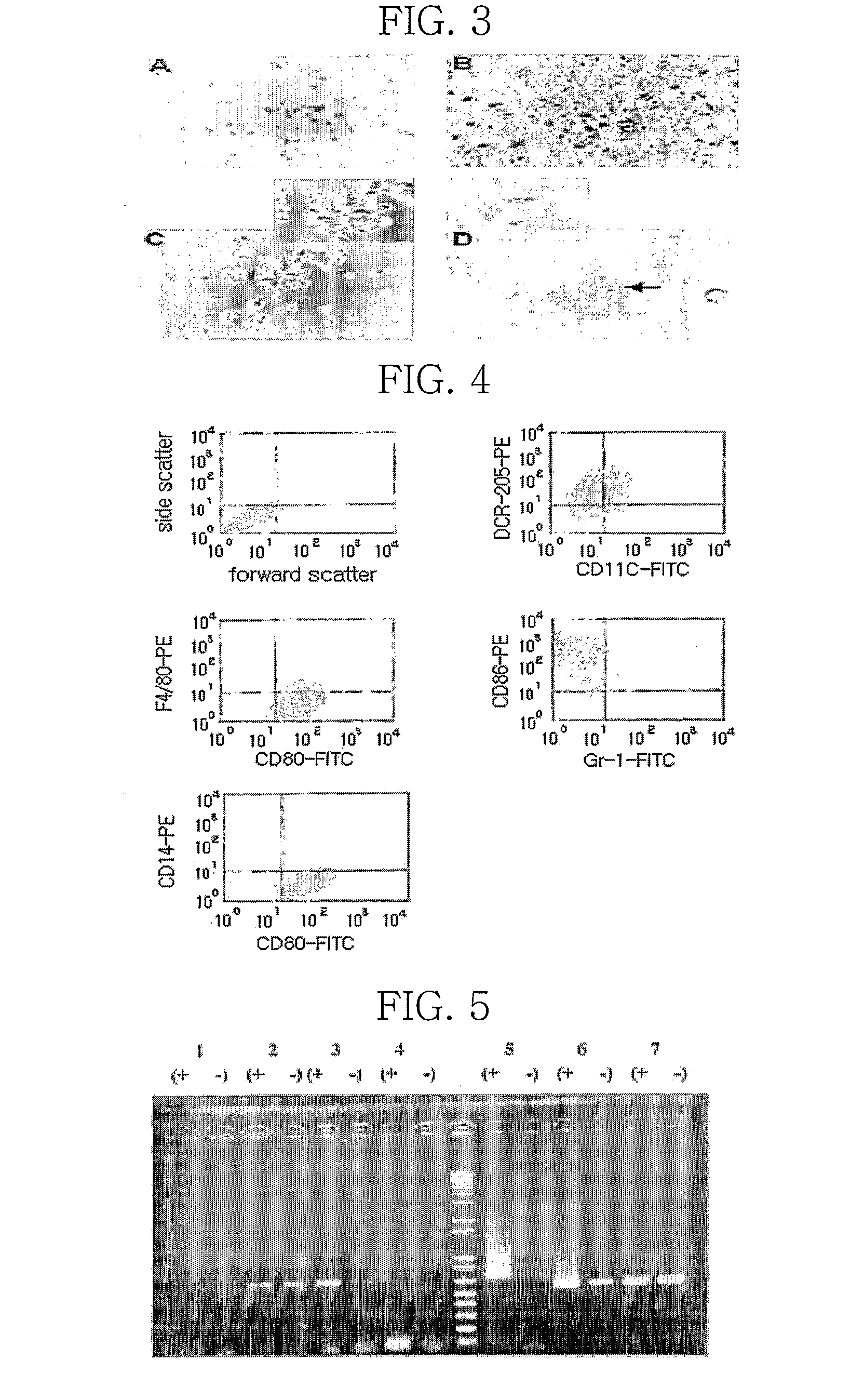Immunomodulating Agent, Anti-Cancer Agent and Health Food Containing Monoacetyldiacylglycerol Derivatives
a technology of monoacetyl diacyl glycerol and immunomodulating agent, which is applied in the field of immunomodulating agent, medical supplies, and health foods containing monoacetyl diacyl glycerol derivatives, can solve the problems of limited use of most of those immune regulators, adverse effects, and frequently decreased immunity, so as to increase t-cell stimulation index, increase t-4 activity, and increase t-8 activity
- Summary
- Abstract
- Description
- Claims
- Application Information
AI Technical Summary
Benefits of technology
Problems solved by technology
Method used
Image
Examples
experimental example 1
Effects of Mono Acetyl Diacyl Glycerol Derivatives on T-Cell and Mononuclear Cell Proliferation
experimental example 1-1
Effects of Mono Acetyl Diacyl Glycerol Derivatives on T-Cell Proliferation
[0097]Splenocytes were collected from C57BL / 6 mice (provided from Asan Institute for Life Sciences Animal Lab., Seoul, Korea) spleens. Then, single cell suspensions were obtained by repeated aspiration and flushing. Red blood cells were removed using ammonium chloride and then passed through nylon wool to remove debris and clumps. T-cells were purified using magnetic bead (MACS bead, Miltenyi Biotec, bergich gladbach, Germany) containing anti-goat IgG MACS bead, Miltenyi Biotec, bergich gladbach, Germany) or anti-mouse CD4 (MACS bead, Miltenyi Biotec, bergich gladbach, Germany) or anti-mouse CD8 antibody (MACS bead, Miltenyi Biotec, bergich gladbach, Germany) (Turner and Dockrell (1996) Immunology, 87: 339-342).
[0098]T cell suspensions were suspended in Isocove's modified Dulbecco's medium (IMDM, Gibco, Grand Island, N.Y.) supplemented with 10% fetal bovine serum (referred as ‘FBS’ hereinafter) (Gibco, Grand I...
experimental example 1-2
Effects of Mono Acetyl Diacyl Glycerol Derivatives on Monocytes Proliferation
[0100]Monocytes were isolated from human whole blood using Histopaque 1077. And then, monocytes (5×106 cells / ml) were allowed to adhere to tissue culture flask for 3 hours in a 5% CO2 incubator. After 3 hours, non-adherent cells were removed and adherent cells were placed in 96-well plates in RPMI 1640 medium (GIBCO, Grand Island, N.Y.) supplemented with 10% FBS. 5×104 viable cells per well were cultured in 96-well plates, with 1 μg / ml of Compound 1˜5. On the 6th day, cells were incubated with 1 μCi 3H-thymidine / well for 24 hours. On the 7th day, the cells were harvested and the incorporation of 3H-thymidine was measured. Si was calculated by the above mentioned formula 1. As a result, Compound 1-5 treated group had increased monocytes SI 10.68, comparing to control, indicating that the compounds stimulated proliferation of monocytes (Table 2).
TABLE 2Treated groupSI (±S.E)Non treated control1Compound 1 (1 μ...
PUM
| Property | Measurement | Unit |
|---|---|---|
| wt % | aaaaa | aaaaa |
| weight % | aaaaa | aaaaa |
| concentrations | aaaaa | aaaaa |
Abstract
Description
Claims
Application Information
 Login to View More
Login to View More - R&D
- Intellectual Property
- Life Sciences
- Materials
- Tech Scout
- Unparalleled Data Quality
- Higher Quality Content
- 60% Fewer Hallucinations
Browse by: Latest US Patents, China's latest patents, Technical Efficacy Thesaurus, Application Domain, Technology Topic, Popular Technical Reports.
© 2025 PatSnap. All rights reserved.Legal|Privacy policy|Modern Slavery Act Transparency Statement|Sitemap|About US| Contact US: help@patsnap.com



